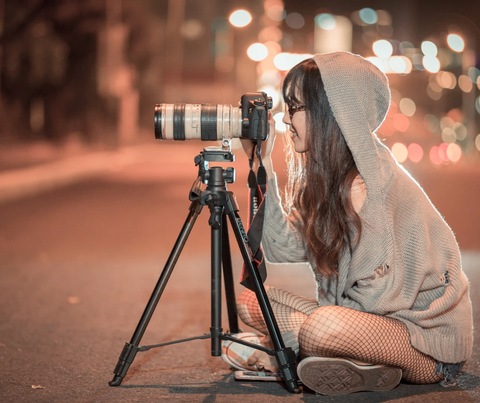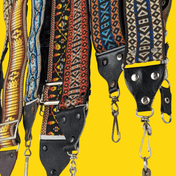Diving into landscape photography provides a magical platform to interpret the splendour of the natural world. This comprehensive guide will take you through every step to enhance your landscape photography skills and help you capture stunning images of nature's finest offerings.
The Essential Tools
The Right Camera Gear for Landscape Photography
Starting your journey as a landscape photographer requires the right photography equipment. Opt for a
DSLR or mirrorless camera to maintain image quality, and a wide-angle lens, which is often the first choice for capturing landscape images due to its broad field of view.
Must-Have Accessories
A sturdy tripod is vital to prevent camera shake and keep your
camera steady. Neutral density filters, a remote shutter release, and a camera bag to keep your camera gear safe and secure are also worth the investment.
Understanding Lighting
The Golden Hour
Landscape photographers live for the Golden Hour—those precious moments during sunrise and sunset when the light paints a breath-taking hue on the landscape and enables the capture of stunning images.
Utilising Diffused and Direct Light
Both diffused and direct light have their roles in landscape and nature photography. Overcast days can provide diffused light, softening shadows and capturing landscapes with balanced exposure. In contrast, direct light can be leveraged to create visually appealing contrasts in your landscape photographs.
Composition in Landscape Photography
Rule of Thirds
One effective composition technique for capturing
landscape photos is the 'Rule of Thirds.' This rule advises to split your frame into nine equal parts and arrange the focal point along these lines or intersections for a balanced and engaging image.
Leading Lines and Natural Framing
Use leading lines to direct the viewer's eye towards the main subject of your landscape photograph. Natural frames, like a canopy of trees or a cave's mouth, can add a layer of depth and foreground interest to your landscape photos.
Getting Creative with Your Shots
Capturing Movement
In landscape and nature photography, depicting movement—like flowing rivers or wind-touched meadows—can create an animated effect. A slow shutter speed allows you to capture these movements elegantly.
Using Different Perspectives
Switch up your angles for a fresh perspective. A low shot can give the landscape a majestic feel, whereas a high vantage point can reveal hidden patterns or textures in your
landscape shots.
Mastering Post-Processing
Importance of Post-Processing
Post-processing plays an essential role in refining your landscape images. It allows you to adjust exposure, contrast, and colour balance, enhancing your raw files to truly reflect the scene's natural beauty.
Helpful Tools and Tips
Adobe Lightroom and Photoshop are widely used post-processing tools. Remember, while post-processing, the aim is to highlight the beauty in the shot, not to create an artificial landscape.
Planning Your Landscape Shots
Importance of Planning
Great landscape photography requires careful planning. Assessing the time of day, weather conditions, and location can help you capture stunning images.
Use of Landscape Photography Apps
Consider using landscape photography apps like PhotoPills or The Photographer's Ephemeris. These tools provide valuable information about sun and moon positioning, weather forecasts, and Golden Hour timings, aiding you in shooting landscape photography effectively.
Dealing with Weather Conditions
Embracing Different Weather Conditions
Every weather condition brings a unique opportunity for landscape photography. A brewing storm can result in a dramatic sky, while fog can lend a mystical touch to your landscape photos.
Essential Tips for Shooting in Varied Climates
When shooting landscape photography in varied climates, protect your camera gear with rain covers or lens hoods. These precautions will help you capture images without compromising the camera sensor's image quality.
Sustainable Landscape Photography
Respect for Nature
Practicing respect for nature is crucial for any landscape photographer. Stick to marked trails, avoid disturbing wildlife, and leave the beautiful landscape as you found it.
Leave No Trace Principles
Following the 'Leave No Trace' principles ensures you minimize your impact on the natural world while capturing landscapes. This includes removing all waste and avoiding damage to natural features.
Practicing and Improving Your Craft
Importance of Practice
Just as any other genre, landscape photography requires consistent practice. Each shot you take is a lesson in what works and what doesn't, helping you refine your landscape photography skills.
Learning from Others
Learning from professional landscape photographers can significantly enhance your skills. Join photography groups, partake in workshops, and review others' work for inspiration and learning.
Landscape photography opens up a world where you can interpret and capture the natural world's beauty. With the right camera settings, a thorough understanding of lighting and composition, and a dedication to practice and learning, you're well on your way to capturing incredible landscape photos. Ready to explore?
FAQs
-
What is the best time for landscape photography? The Golden Hour—around sunrise and sunset—is usually the best time for landscape photography.
-
What are some must-have accessories for landscape photography? A sturdy tripod, a set of neutral density filters, and a reliable camera bag are must-haves for landscape photography.
-
How can I get creative with my landscape shots? You can add creativity to your shots by capturing movement, experimenting with various perspectives, and using natural elements for framing.
-
What role does post-processing play in landscape photography? Post-processing helps enhance your raw files by allowing you to adjust elements like exposure, contrast, and colour balance.
-
What is sustainable landscape photography? Sustainable landscape photography is about capturing the natural world's beauty while minimising your impact on the environment.
SHOP CAMERAS

















